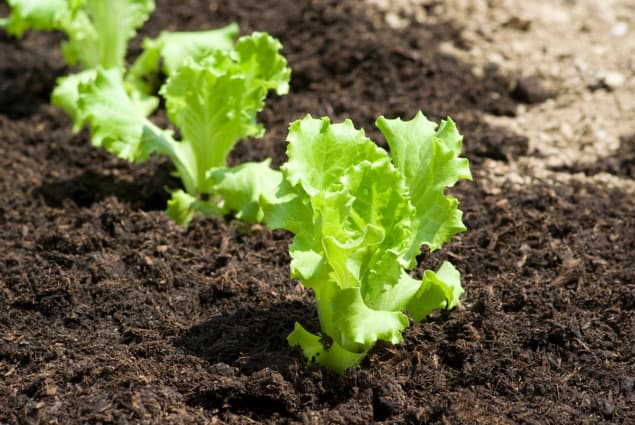
A new study aimed at quantifying how plants take up plastic nanoparticles from the soil has revealed that the plastics accumulate mainly in the roots rather than the shoots. The technique used to trace the nanoparticles involves materials known as lanthanide chelates, and the researchers who developed it say it could be a versatile way to analyse the interactions between nanoplastics and plants.
Tiny fragments of plastic are everywhere – in the ocean, in our food, even on the summits of mountains. The smallest of these fragments, known as nanoplastics, are thought to be more hazardous to life because their small size enables them to penetrate cell membranes. Since the continued large-scale production of plastics means that concentrations of nanoplastics are unfortunately likely to increase, it is important to understand their impact on the environment and the potential risk to human health.
Because nanoplastics can interact with plants in many ways, scientists need to be able to follow how these particles accumulate and move through the plant’s structure. While many studies have investigated the way that plant protoplasts – that is, cells with their walls removed – take up nanoplastics, the mechanisms for uptake and translocation of nanoplastics through large-scale plant structures remain poorly understood. Quantitative information on the rate at which plants uptake nanoparticles and then transport them is particularly lacking.
Studies on lettuce and wheat
In the present work, researchers led by Yongming Luo of the Chinese Academy of Sciences studied how two crops, lettuce and wheat, took up 200-nm-diameter polystyrene particles doped with a europium chelate, Eu-β-diketonate. Polystyrene is the one of the most commonly produced polymers in the world and is widely employed both in food packaging and as a “soil conditioner” to stabilize soil surfaces and help them retain moisture. It has been detected in organic fertilizers, sewage sludge and wastewater.
To mimic different environmental conditions, Luo and colleagues grew their lettuce and wheat in hydroponic cultures and in sandy soil. They quantified the doped polystyrene particles in the plants using a technique known as inductively coupled plasma mass spectrometry. As europium is a very rare element and does not naturally occur in plants, every signal they detected represents a particle that the plant took up. They also visualized the particles using background-free time-resolved fluorescence imaging, and confirmed their presence using scanning electron microscopy.

Microplastics are turning up everywhere
The team’s analyses revealed that polystyrene-europium particles accumulated mainly in the roots of the plants, while transport to the shoots was less than 3% for 5000 μg of polystyrene particles per litre of exposure. Willie Peijnenburg, a researcher at Leiden University in the Netherlands who was also involved in the study, explains that finding more plastic in the root than the shoot means that only a small number of particles end up in the edible parts of the plants.
The researchers, who report their work in Nature Nanotechnology, say they now plan to apply this technique in microcosm or mesocosm experiments to enhance the sensitivity of their nanoplastic tracing and detection methods.“We need to carefully monitor potential lanthanide leaching from the particles in the systems we studied due to the complex environmental conditions, as well as due to the presence of a wide number of (micro)organisms,” team member Lianzhen Li tells Physics World.



